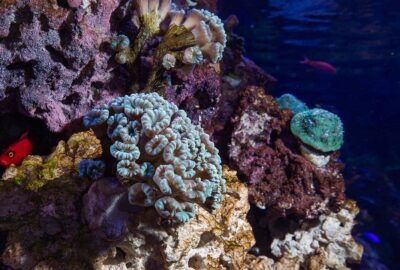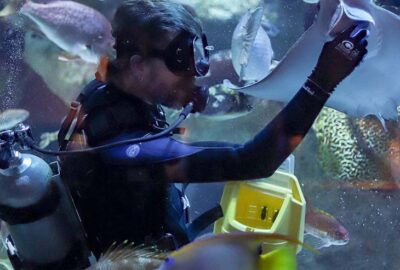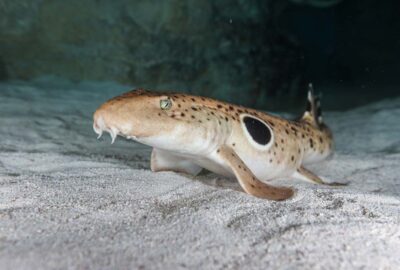Better Together: Symbiotic Relationships of the Sea
These underwater “BFFs” use teamwork to survive and thrive.
By New England Aquarium on Friday, August 01, 2025

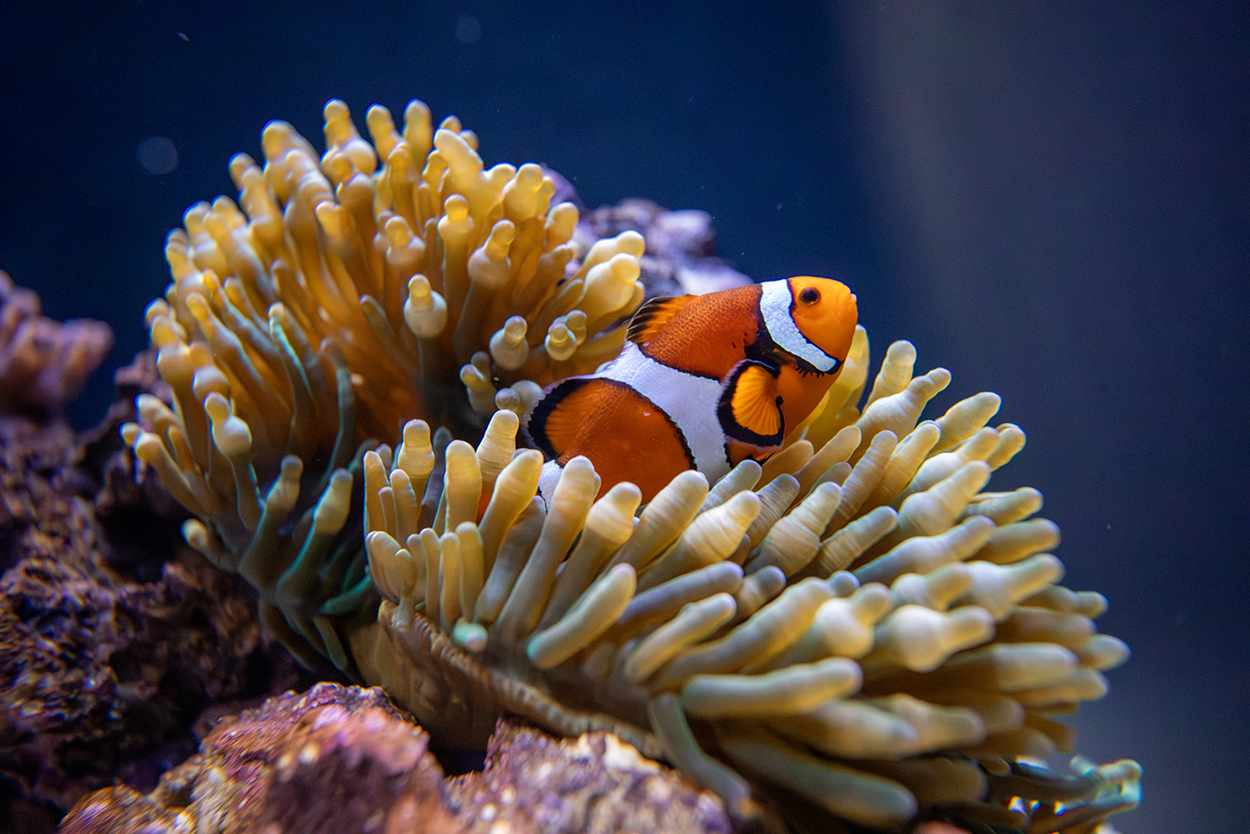
What do friends do for each other? They might share meals, protect each other, or help one another grow. The same is true for many marine animals with symbiotic relationships—close, long-term interactions between two different species. These relationships can take different forms:
- Mutualism, where both species benefit from the relationship
- Commensalism, where one benefits and the other is unaffected
- Parasitism, where one benefits at the other’s expense (or, informally, the “frenemies” of the sea)
Here are some symbiotic animal pairs you can find at the New England Aquarium!
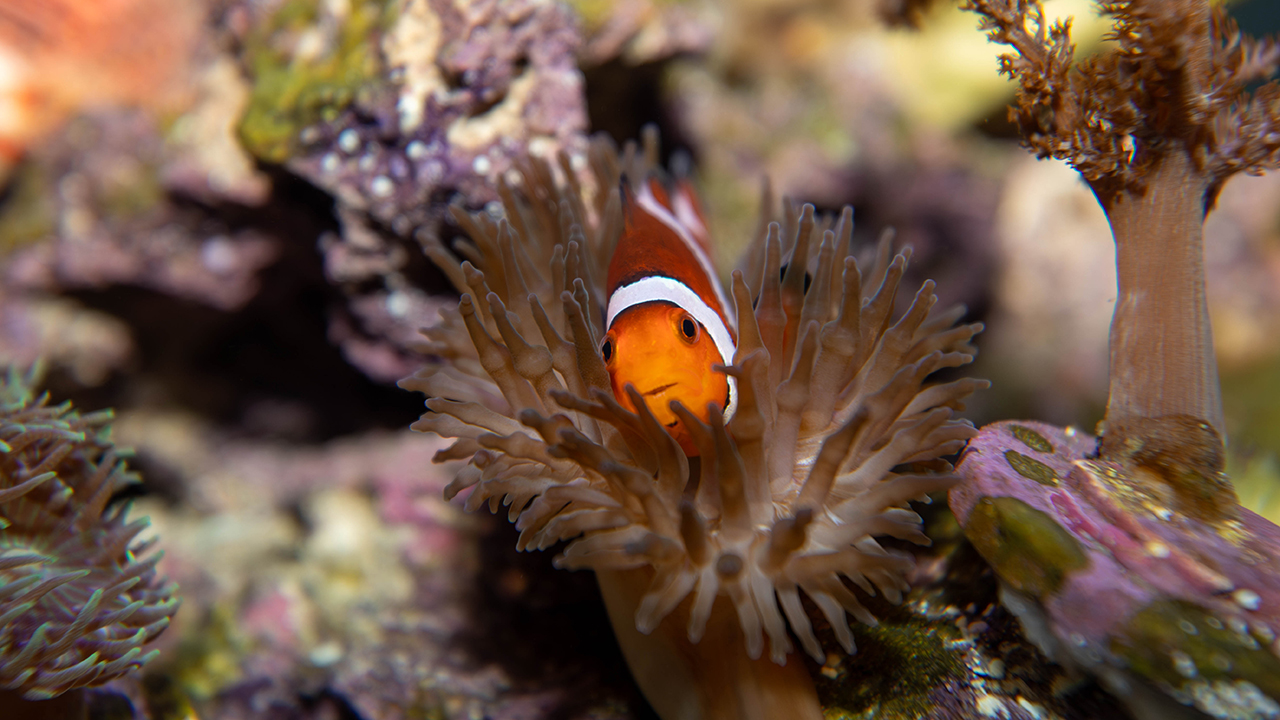
Clownfish and anemones
It’s not easy to be friends with an anemone. These invertebrate animals are covered in stinging cells called nematocysts. But clownfish have just the right traits to make the relationship work. While anemones are a strong deterrent for any potential predators of the clownfish, these fish are specially equipped with a mucous membrane that protects them, allowing them to safely take shelter among the anemone’s tentacles. By staying close to anemones, they are always just a short swim away from cover.
In return, clownfish offer the anemone leftover food particles, which ensures it always has a steady supply of snacks. There are even recordings of clownfish intentionally feeding anemones, placing food into the anemone’s tentacles.
Corals and zooxanthellae
Some friends help you shine—and zooxanthellae do just that for many coral species. These algae live inside coral tissue and provide the pigments that give corals their vibrant colors and patterns. Zooxanthellae also perform photosynthesis, producing sugars that nourish both themselves and their coral hosts, helping all to grow and thrive.
Meanwhile, corals contribute by capturing food particles that float by in the water. They also use their nematocysts to help protect themselves and their zooxanthellae from potential predators. This partnership is so essential that most corals can’t survive long without their algae allies.
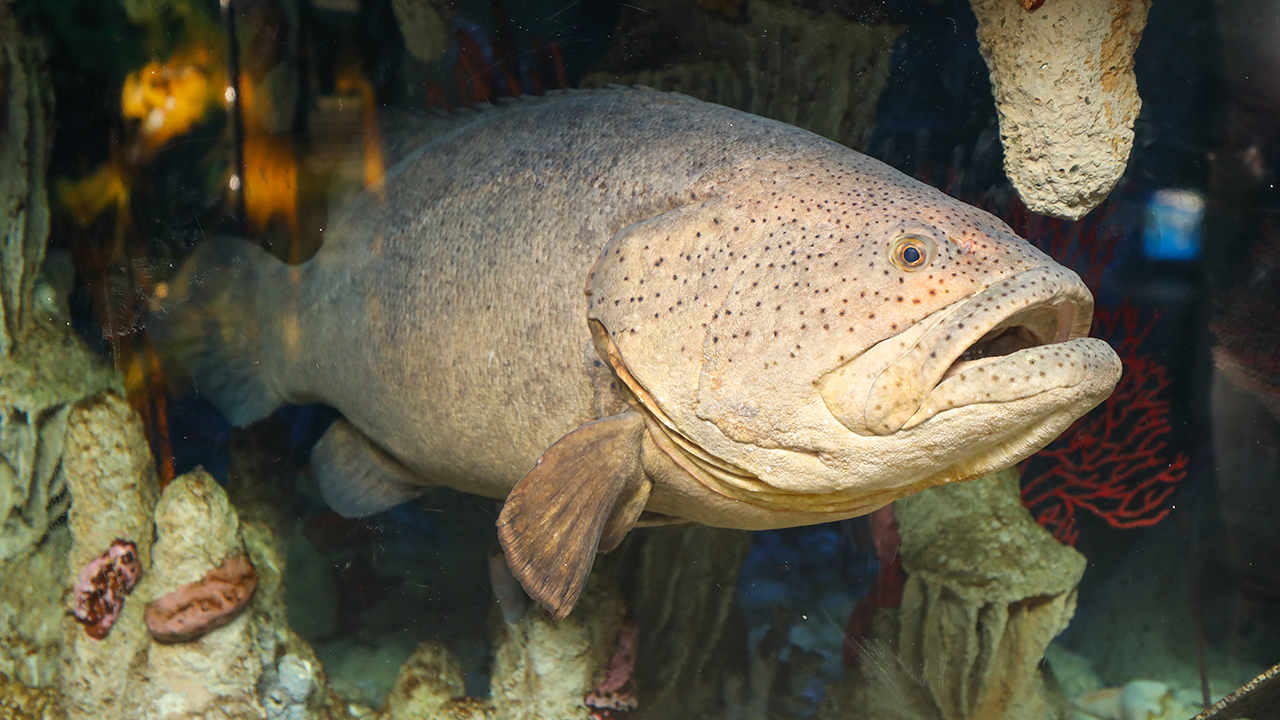
Grouper and cleaner fish
Cleaner fish, like neon gobies and blue streak cleaner wrasse, offer spa-like services to groupers and other large fish. They nibble away food debris from groupers’ teeth, remove dead skin, and pick off parasites, helping their clients—and the whole ecosystem—stay healthy. Groupers thank the cleaner fish not only by not eating them but also offering protection. Their large size discourages predators from bothering the much smaller cleaner fish.
You can see the Grouper-cleaner fish relationship with neon gobies in the Blue Hole exhibit and blue streak cleaner wrasse in the Indo-Pacific Coral Reef exhibit at the Aquarium.
Pistol shrimp and watchman goby
The pistol shrimp (named for the strong and loud snap they can make with their claws as a defense mechanism) is a great burrower but has poor eyesight. The watchman goby has great vision but mediocre digging skills. Together, they’re a dream team. Gobies and shrimp pair up, with the shrimp building and maintaining burrows and picking around for food while the goby stands watch, alerting the shrimp to any approaching danger.
The shrimp stays in constant contact with the goby using its antennae. If the goby flicks its fins, they both retreat into the burrow. They also rest together there at night.
You might spot this dynamic duo in the Aquarium’s Mangrove exhibit, always within a few inches of each other, never apart for long.
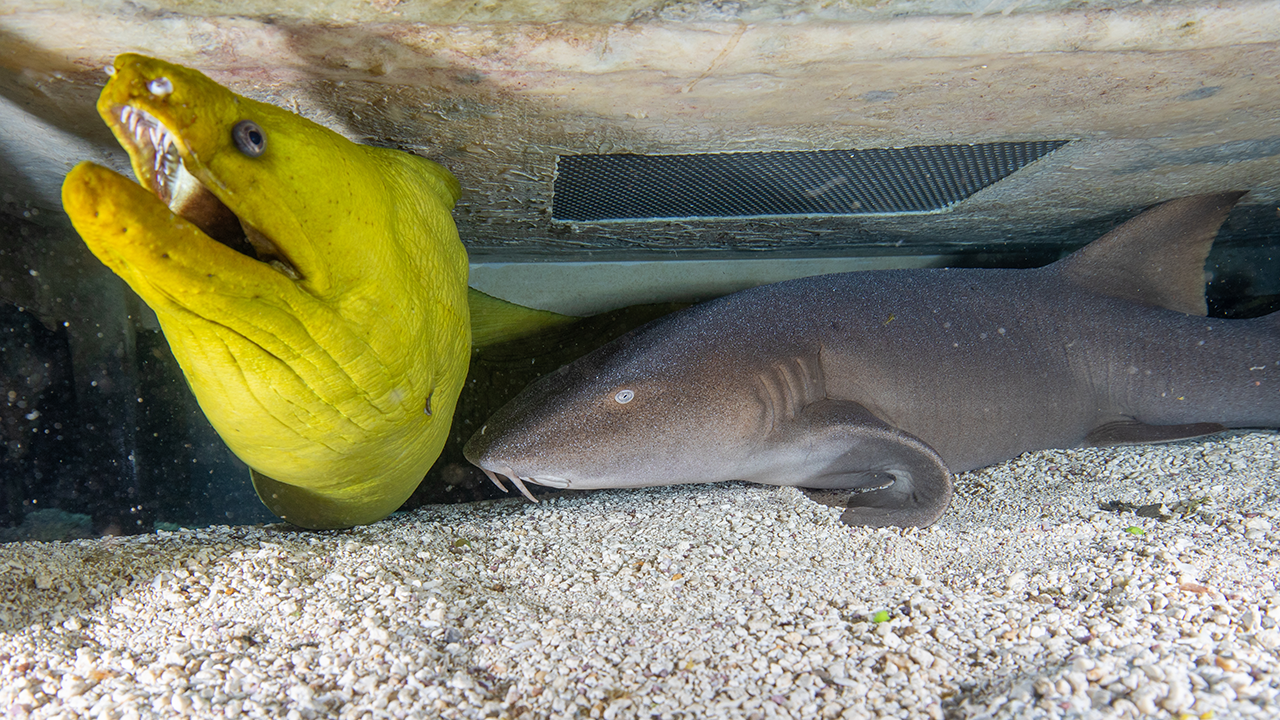
Cirri and Thomas
Though not a symbiotic relationship you’d find in the ocean, Cirri the nurse shark and Thomas the green moray eel have formed a unique bond at the Aquarium. Despite their differences in species, age, and appearance, they can often be found resting side by side in the Giant Ocean Tank exhibit.
Several months after Cirri joined the exhibit in 2023, aquarists began to notice her sticking close to Thomas in one of his most frequented resting spots at the bottom of the exhibit. Why? Our aquarists have a theory.
The Aquarium’s Anderson Cabot Center for Ocean Life scientists study wild nurse sharks in the Dry Tortugas, and often see females in the shallows lying so close together that their fins touch. Video from shark-cam tags shows sharks resting and seeking contact with one another in deeper water, too.
Thomas, weighing about 45 pounds and nearly six feet long, may not be a shark, but he’s the closest match in the exhibit—and Cirri seems to think he’s the perfect companion. Though Thomas has several other resting locations and certainly enjoys his space at times, he frequently chooses to return to the bottom of the exhibit, resting alongside Cirri.
Bring your friends to the New England Aquarium to see these fascinating symbiotic relationships in action!

